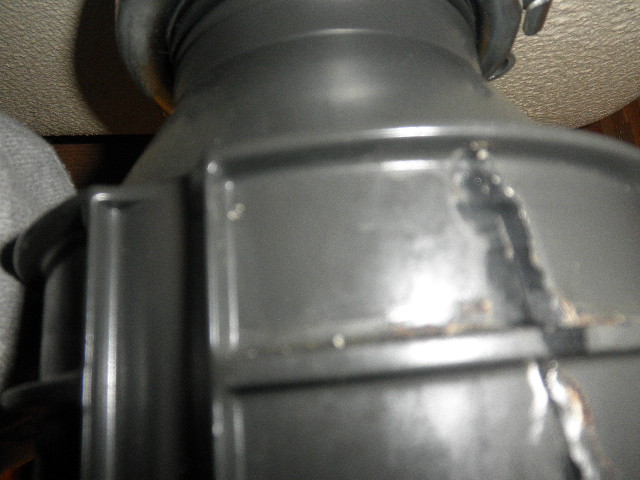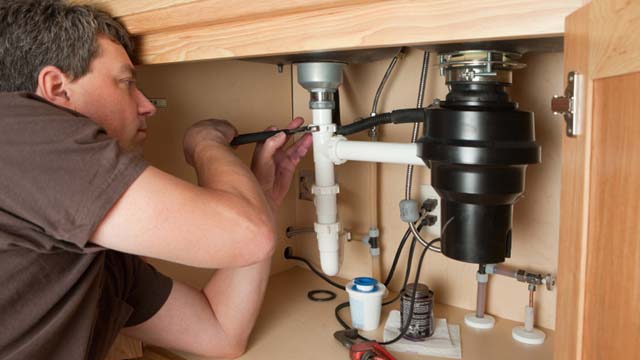My Guide to Resolving a Leak in Your Garbage Disposal
My Guide to Resolving a Leak in Your Garbage Disposal
Blog Article
How do you feel about Garbage Disposal Leaking From Bottom?

Garbage disposals are vital kitchen appliances that aid in disposing of food waste effectively. However, a leaking garbage disposal can be a discouraging and untidy issue to deal with. Thankfully, many leakages can be taken care of easily with a few easy steps. In this post, we will certainly discuss just how to repair a dripping waste disposal unit efficiently.
Intro
Garbage disposals are set up under cooking area sinks and are made to shred food waste right into smaller sized items, enabling it to pass through the pipes system conveniently. While these devices are generally reputable, leaks can take place with time as a result of deterioration, loose connections, or damages to the system.
Typical Causes of Leakages in Trash Disposals
Worn Seals and Gaskets
Seals and gaskets play an important duty in protecting against water from leaking out of the garbage disposal. Over time, these components can wear away, leading to leaks around the disposal device.
Loose Links
The links between the garbage disposal and the pipes system can become loosened in time, creating water to leak out during procedure.
Cracks or Holes in the Disposal Unit
Physical damage to the garbage disposal, such as splits or openings in the housing, can also lead to leaks.
Identifying the Resource of the Leak
Before trying to fix a leaking garbage disposal, it is vital to identify the source of the leak. This can normally be done with visual inspection or by performing basic tests.
Visual Examination
Examine the garbage disposal device meticulously for any type of signs of water leakage. Pay very close attention to areas around seals, gaskets, and link points.
Examining for Leakages
One means to evaluate for leakages is by running water via the disposal system and checking for any kind of visible indications of leakage.
Tools and Products Needed for Repairing a Dripping Garbage Disposal
Prior to beginning the repair work procedure, collect the essential tools and products, consisting of a screwdriver, adjustable wrench, plumbing technician's putty, substitute seals or gaskets, and epoxy or patching material for fixing splits or holes.
Step-by-Step Guide to Taking Care Of a Dripping Waste Disposal Unit
Switch off the Power
Before trying any fixings, guarantee that the power to the garbage disposal system is shut off to avoid the threat of electrical shock.
Locate the Leakage
Recognize the exact place of the leakage and determine the reason.
Tighten up Connections
Make use of a wrench to tighten up any kind of loosened connections between the disposal system and the pipes system.
Change Seals or Gaskets
If the leakage is due to worn seals or gaskets, remove the old components and replace them with new ones.
Patching Fractures or Openings
For splits or openings in the disposal device, use epoxy or a suitable patching material to secure the broken location.
Examining the Waste Disposal Unit After Repair Service
When the repair service is full, check the waste disposal unit by running water with it to make sure that the leak has been resolved.
Preventive Upkeep Tips to Prevent Future Leaks
To prevent future leakages, it is important to perform normal upkeep on your garbage disposal. This consists of keeping it tidy, staying clear of putting non-food products or hard items down the disposal, and periodically looking for leaks or other problems.
Conclusion
To conclude, fixing a dripping garbage disposal is a reasonably simple process that can be finished with standard devices and materials. By adhering to the actions detailed in this post and practicing preventative upkeep, you can keep your garbage disposal in good working problem and prevent expensive repairs in the future.
What to Do About a Leaking Garbage Disposal
A leaking garbage disposal often goes unnoticed until you confront a sopping cabinet, a foul-smelling puddle, or an audible drip-drip-drip from the unit. The fix can be frustrating, too, because the leak can stem from a number of components in the system. Fortunately, with a little sleuthing, you can zero in on the leak and—depending on the exact location—stop the icky oozing and repair the component that caused it. Worst case scenario, if it turns out that the garbage disposal must be replaced, installing a new one is a reasonable do-it-yourself task for those with basic plumbing skills. Read on to keep the cash you’d otherwise hand over to a pro.
Prepare to find the leak
Prior to testing the garbage disposal for leaks, unplug it at the wall outlet and turn off the power from the breaker box to prevent electrical shock. Then insert a watertight sink stopper into your sink drain and wipe the unit dry with a clean cloth. In any handy container, mix a few drops of food coloring into a few cups of water, and pour the dyed water onto the sink stopper to help you locate the leak.
Investigate the source
the top, where the disposal meets the sink drain the side, where the dishwasher hose or main drain pipe connects to the disposal or the bottom of the unit Inspect each of these locations while gliding a light-colored rag over the unit; the dyed water will readily show on the rag and reveal the location of the leak. If a leak isn’t immediately apparent, remove the sink stopper and pour a few more cups of dyed water down the sink drain, then check for leaks again. Leaks near the top of the unit are more likely to show themselves while the sink is plugged, while side and bottom leaks are more noticeable while the sink is unplugged.
The metal sink flange that sits directly inside the sink drain is typically sealed around the top with plumber’s putty (a clay-like sealant) and then secured from under the sink with bolts. If the plumber’s putty deteriorates, or the bolts loosen, the flange can no longer form a watertight seal between the sink drain and the disposal—which could cause a leak at the top of the unit.
To reseal the leaky flange, you must first detach the garbage disposal. Start by loosening the screws securing the main drain pipe to the disposal, then loosen the screws in the metal clamp securing the dishwasher hose to the disposal and detach the drain pipe and dishwasher hose from the disposal. Loosen the screws in the mounting ring that connects the disposal to the metal mounting assembly beneath the sink, then pull down the disposal and carefully set it on a clean, dry surface. Loosen the bolts in the mounting assembly with a wrench, then pull down the mounting assembly and set it near the disposal.

As an enthusiastic person who reads about Tips on Fixing a Leaking Garbage Disposal, I thought sharing that article post was smart. Are you aware of someone else who is intrigued by Why Is My Garbage Disposal Leaking From the Bottom?? Take a moment to promote it. We enjoy reading our article about The Handy Guide To Fixing Your Garbage Disposal Leaking.
Request An Appointment Report this page